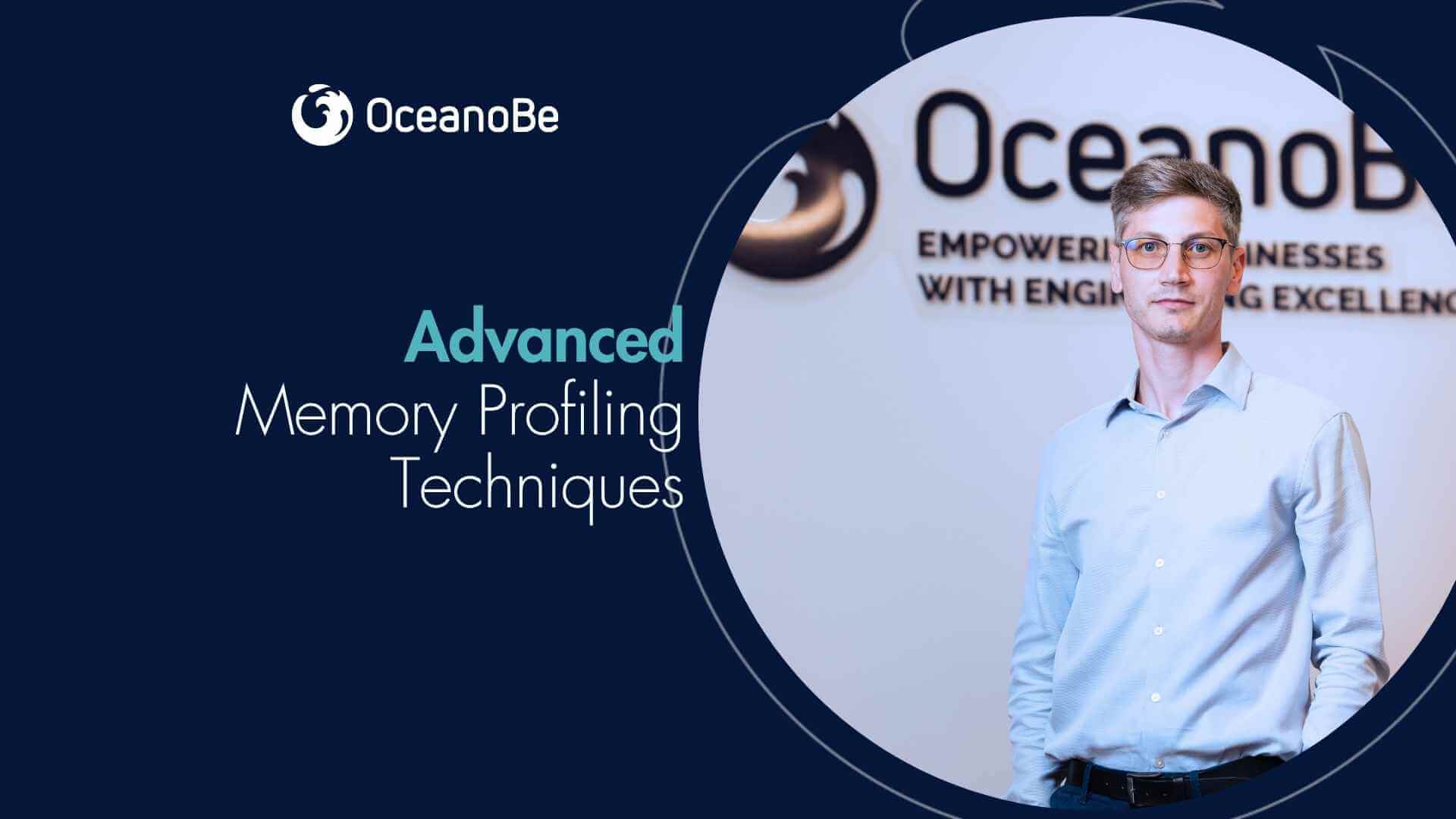Performance Optimization
Advanced Memory Profiling Techniques
Advanced Memory Profiling Techniques

When a single memory leak can cause latency spikes or service outages, memory profiling becomes more than an optimization—it’s a core engineering discipline.
At OceanoBe, we’ve helped financial institutions and payment providers scale their platforms to handle tens of thousands of requests per second, while keeping systems stable, responsive, and compliant. This article explores the techniques, tools, and best practices developers can use to identify inefficiencies, prevent memory leaks, and ensure predictable performance in high-volume fintech systems.
Memory management directly affects latency, throughput, and system reliability—all critical in the regulated financial environment.
Poorly optimized code can lead to cascading failures: slow response times, delayed reconciliations, or even data loss.
Beyond performance, regulators also require traceability and reliability in systems that handle financial data. A memory failure in a core banking component can lead not just to downtime, but to compliance breaches and audit risks.
A memory leak occurs when allocated memory is never released, gradually consuming all available resources. In fintech systems that process millions of transactions, even a small leak can scale exponentially.
Profiling Techniques
Pro Tip:
Always pair heap profiling with stress tests that mimic production loads. Memory issues often emerge only under real-world transaction concurrency.
Memory leaks are not the only concern—inefficient allocation can cripple performance even when the system doesn’t technically run out of memory.
Best Practices for Efficient Allocation
Reuse Objects: Implement object pooling for frequently used structures like database connections, transaction models, or logging components.
Avoid Unbounded Caching: Caches are useful but dangerous if not size-limited. Always apply eviction policies (LRU/LFU) and monitor hit/miss ratios.
Leverage Streams Wisely: In Java, use parallel streams only when beneficial. In high-frequency flows, they can increase garbage collection (GC) overhead.
Batch Processing: Instead of processing transactions one by one, batch them into smaller chunks—reducing the number of allocations and GC cycles.
For fintech workloads, even micro-optimizations—like switching from boxed to primitive data types or using efficient collections—can yield significant throughput gains at scale.
Different environments demand different approaches — and the right tool can make all the difference when it comes to diagnosing and preventing performance bottlenecks.
For our JVM-based microservices, tools like JProfiler and YourKit have proven invaluable. They allow real-time heap analysis, thread visualization, and detailed tracking of memory allocation, helping teams quickly pinpoint inefficiencies.
When investigating post-crash memory dumps, we rely on Eclipse MAT (Memory Analyzer Tool). Its ability to identify leaks and retained objects offers deep insights into the underlying causes of memory-related failures.
For lightweight, continuous profiling, VisualVM stands out. It’s particularly effective for spotting gradual memory growth patterns that can signal leaks or unoptimized caching strategies.
In .NET environments, dotMemory from JetBrains is a go-to solution. It efficiently detects memory leaks and object retention issues in C# services, offering a clear picture of how memory behaves in production-like scenarios.
For frontend and Node.js applications, tools such as Chrome DevTools and Node Clinic help detect event loop blocking and excessive memory usage, ensuring responsive and stable user experiences.
And when it comes to continuous monitoring, we integrate Prometheus with Grafana dashboards to visualize heap and garbage collection performance trends over time.
At OceanoBe, we take this one step further by integrating profiling tools directly into our CI/CD pipelines, automating performance regression detection for every release. This proactive approach ensures that memory issues are caught early—long before they can impact production systems.
For Java-based financial systems (a common stack in banking), Garbage Collection has a huge impact on runtime performance.
Excessive GC pauses can cause transaction timeouts or service unavailability.
Optimization Strategies
Switch GC Algorithms: G1GC and ZGC provide lower latency and more predictable pause times compared to CMS.
Tune Heap Sizes: Avoid overallocating heap space—too large a heap means slower collection cycles.
Profile with GC Logs: Use flags like -Xlog:gc* and tools such as GCViewer to analyze pause times and optimize configurations.
By analyzing GC behavior under simulated transaction loads, developers can predict performance degradations before they reach production.
In event-driven microservice architectures, memory issues often emerge in asynchronous message handling and reactive streams.
To avoid uncontrolled growth:
Use bounded message queues (Kafka, RabbitMQ).
Apply backpressure mechanisms to prevent consumers from being overwhelmed.
Monitor consumer lag and memory usage side by side—slow consumers often indicate excessive in-memory buffering.
For fintech systems handling multiple concurrent payment flows, these optimizations can prevent cascading slowdowns and service instability.
Memory optimization also supports regulatory compliance.
Many financial regulations (PSD2, ISO 20022, PCI DSS) require high availability and integrity of data processing. A memory fault causing data loss or inconsistent transaction states can trigger audit findings or fines.
By integrating profiling into the software delivery lifecycle (SDLC), fintech teams ensure:
Predictable performance under audit conditions.
Traceable change history of performance-related configurations.
Continuous monitoring aligned with operational risk frameworks.
Efficient memory management is not just a technical requirement—it’s part of a compliance strategy.
Manual profiling doesn’t scale. The future lies in continuous memory performance validation.
At OceanoBe, we embed profiling checkpoints into CI/CD pipelines:
This approach ensures that optimizations are consistent and traceable, helping teams maintain stability as systems evolve.
In fintech and banking, performance isn’t optional—it’s strategic. Efficient memory management allows systems to scale, maintain compliance, and deliver consistent real-time experiences to users and partners.
With the right profiling tools, tuned GC strategies, and automation in place, developers can transform memory optimization from reactive troubleshooting into a proactive pillar of software excellence.
At OceanoBe, we help our clients design and optimize high-performance architectures that keep their systems running fast, stable, and secure—even under the heaviest transaction loads.